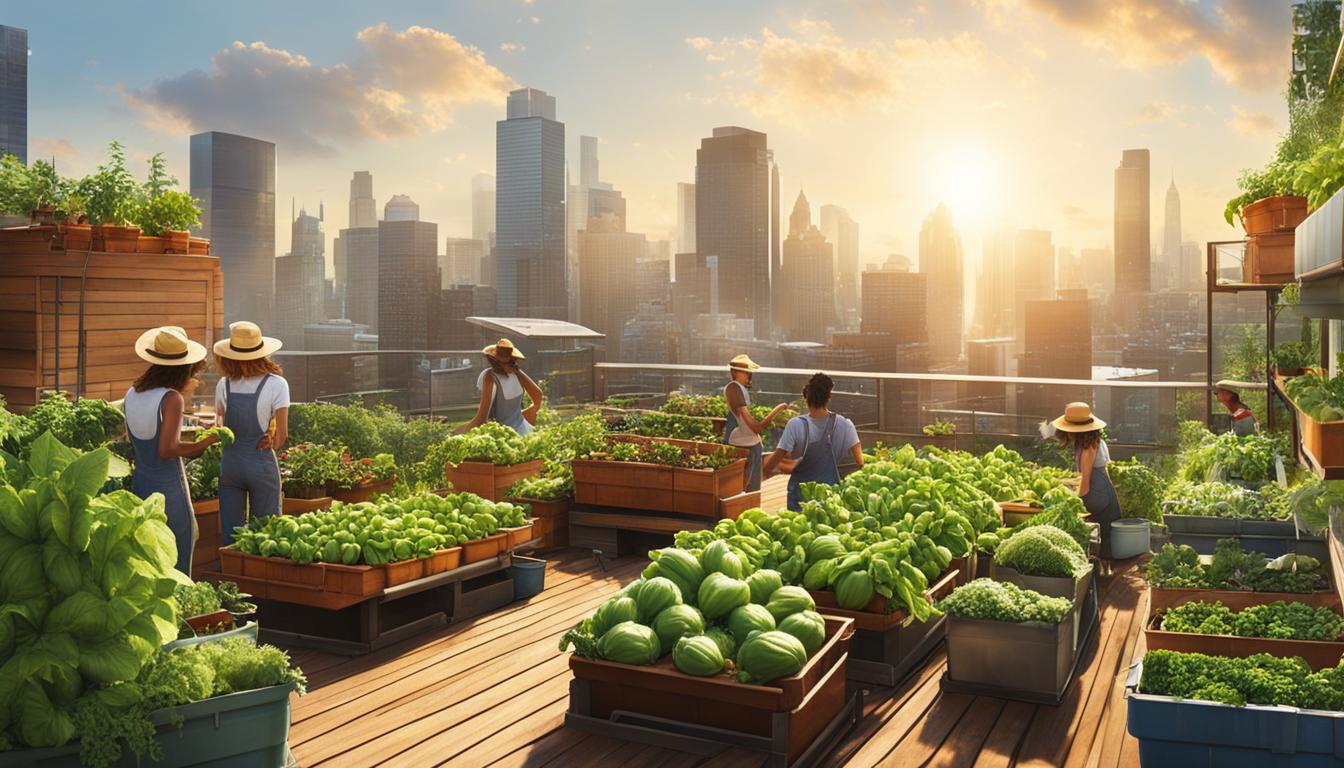Welcome to the world of urban farming, where fresh produce is grown right in the heart of the city. Urban farming, also known as urban agriculture, is a practice that brings green spaces to urban environments and promotes sustainable food production. From rooftop gardens to community plots, urban farms are transforming cities into vibrant, self-sufficient spaces.
Urban farming utilizes unused spaces within cities to cultivate a wide range of crops, providing city dwellers with locally-grown, nutritious food. Community gardens foster a sense of belonging and allow individuals to grow their own vegetables while connecting with nature. Professional urban farms, on the other hand, operate on a larger scale, utilizing rooftops, vacant lots, and even indoor environments to maximize crop production.
Join the movement and discover the benefits of urban farming. Engage with your community, create new job opportunities, and contribute to a greener, more sustainable future. Let’s explore the world of urban farming together!
Key Takeaways:
- Urban farming brings fresh produce to the city, utilizing unused spaces within urban environments.
- Community gardens and professional urban farms are popular forms of urban agriculture.
- Urban farming provides numerous benefits, including community engagement, job creation, and environmental preservation.
- Innovative techniques such as rooftop gardening and indoor farming maximize space and resources.
- Successful examples of urban farming exist across the United States and Canada, showcasing the potential for sustainable food production.
Benefits of Urban Farming
Urban farming offers a multitude of benefits to cities and their residents. Community gardens and urban farms serve as spaces for people to come together, socialize, and connect with nature. Engaging in urban agriculture can improve people’s mental and physical well-being, provide a sense of community, and promote healthy dietary choices.
By participating in urban farming, you can escape the hustle and bustle of city life and find solace in tending to your own garden or volunteering at a community space. The act of growing your own food or interacting with plants has been proven to reduce stress, increase happiness, and improve overall mental health.
Moreover, urban farming creates job opportunities and helps preserve biodiversity. As urban farms expand, they require a workforce to manage various tasks such as planting, harvesting, and maintaining the farm. This not only generates employment opportunities but also fosters skill development and economic growth in local communities.
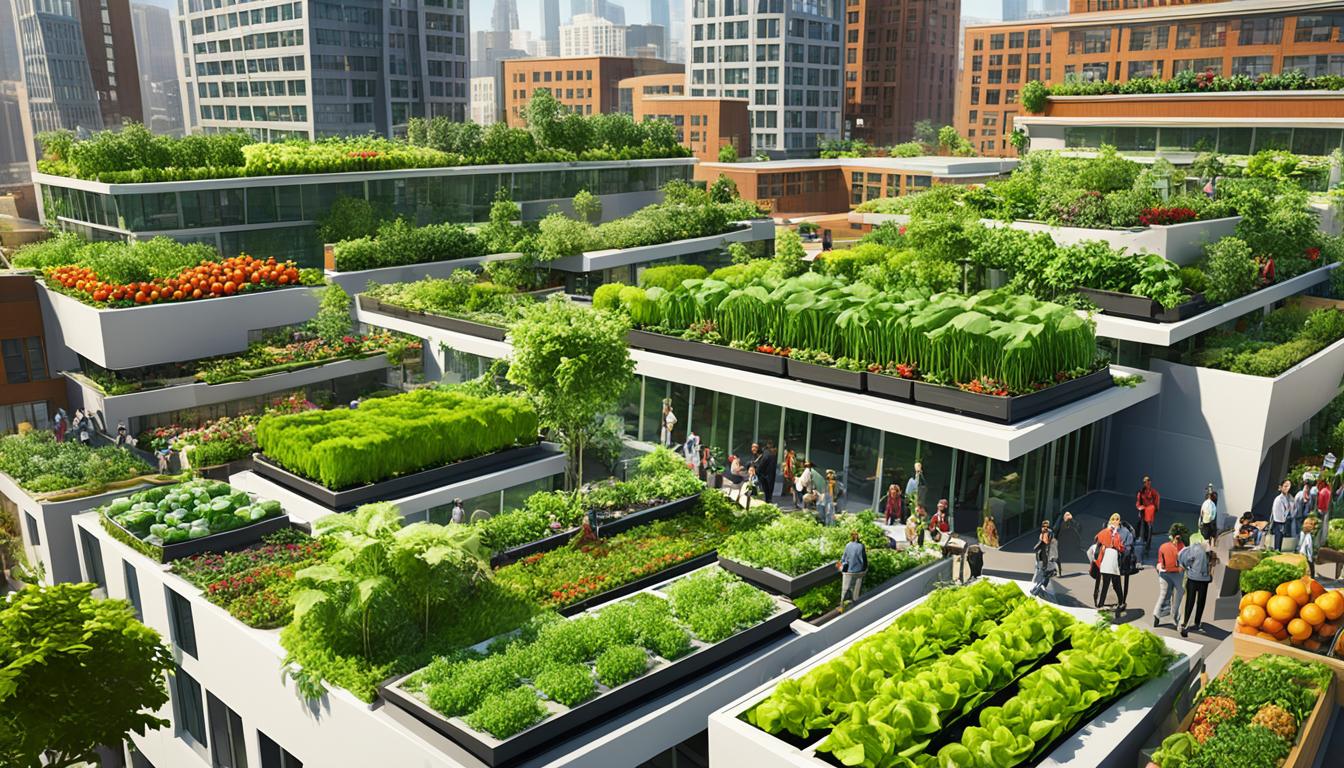
Bringing nature back into cities through urban farming also contributes to a more sustainable and environmentally friendly urban landscape. By growing food locally, urban farms reduce the ecological footprint associated with long-distance transportation and contribute to mitigating climate change. Additionally, urban farming helps to preserve and protect biodiversity by creating habitats for various animal and plant species within urban areas.
Types of Urban Farming
Urban farming encompasses various approaches to cultivating fresh produce in urban environments. Let’s explore the two main types of urban farming: community gardens and professional urban farms.
Community Gardens
Community gardens offer individuals the opportunity to come together and grow their own vegetables, promoting a sense of community and connection with nature. These small urban areas are found in cities across the country and provide spaces for socializing, enjoying nature walks, and fostering community connections. Community gardens are perfect for individuals who want to experience the joy of growing their own food and engage with like-minded people. It’s a fantastic way to take part in urban farming while creating a vibrant and supportive community.
“Community gardens are not just about growing vegetables; they are about growing communities.”
Professional Urban Farms
Professional urban farms are businesses that operate within a city, utilizing various locations such as rooftops, vacant plots of land, or indoor environments. These farms employ innovative methods to maximize space and resources, enabling the cultivation of fresh produce in urban settings. Rooftop gardening is an example of professional urban farming that utilizes unused rooftop spaces for crop production. Additionally, indoor urban farms, such as hydroponics systems, leverage controlled environments to grow crops efficiently. These professional urban farms play a crucial role in supplying fresh, locally-grown produce to urban communities, contributing to a sustainable and resilient food system.

By embracing both community gardens and professional urban farms, cities can establish a thriving urban farming ecosystem that enhances food security, promotes community engagement, and fosters a sustainable and healthy urban environment.
Innovative Techniques in Urban Farming
Urban farming is constantly evolving to adapt to the unique challenges of urban environments. To overcome space limitations and maximize the efficiency of food production, innovative techniques have emerged in the realm of urban farming.
Hydroponics: Growing Without Soil
One of the most popular techniques in urban farming is hydroponics, which allows plants to grow without traditional soil. Instead, nutrient-rich water is used to provide plants with the essential elements they need to thrive. Hydroponics systems can be set up indoors or outdoors, making it a versatile solution for urban environments. By eliminating the need for soil, hydroponics maximizes space utilization, conserves water, and reduces the risk of pests and diseases.
Vertical Farming: Maximizing Crop Production
In urban areas where land is limited, vertical farming provides a practical solution to maximize crop production. Vertical farming utilizes vertical space by stacking plants in multiple layers. This technique optimizes space utilization by growing crops upward instead of outward. Not only does vertical farming allow for more crops to be grown in a smaller footprint, but it also reduces the need for arable land. By utilizing advanced irrigation and lighting systems, vertical farms can create optimal growing conditions and ensure year-round production.

Indoor Farming in Controlled Environments
Another innovative technique in urban farming is indoor farming in controlled environments. By utilizing greenhouses or indoor hydroponic systems, urban farmers can create ideal conditions for plant growth. Controlled environments allow for precise control over factors such as temperature, humidity, light, and nutrient levels, ensuring optimal plant development. This technique enables year-round production regardless of external weather conditions and provides a more sustainable and stable food supply for urban areas.
These innovative techniques in urban farming, including hydroponics, vertical farming, and indoor farming in controlled environments, offer efficient and sustainable solutions to overcome the limitations of traditional agriculture in urban settings. By embracing these innovative methods, urban farmers can produce fresh, locally-grown food in a manner that is both economically viable and environmentally friendly.
Successful Examples of Urban Farming
Urban farming has gained significant traction across the United States and Canada, with several successful examples showcasing the potential of this sustainable agricultural practice. Let’s explore some noteworthy urban farms that have made a positive impact on their communities.
Lufa Farms
Lufa Farms, based in Montreal, is an exceptional example of urban farming innovation. This pioneering company operates rooftop greenhouses, utilizing unused urban spaces to cultivate hyper-local produce. Lufa Farms’ commitment to year-round production ensures a constant supply of fresh, flavorful vegetables for local consumers.
GoodLeaf
GoodLeaf has made waves in the urban farming industry with their cutting-edge vertical farming techniques. With farms in Nova Scotia and Ontario, GoodLeaf specializes in growing nutrient-rich greens using soilless systems. Their fresh produce meets the high demands of wholesale buyers, promoting sustainable farming practices and offering a greener alternative to traditional agricultural methods.
Ohio City Farm
Located in the heart of Cleveland, Ohio City Farm is an inspiring example of urban farming’s potential for community development. This expansive urban farm operates on contiguous land and focuses on philanthropic initiatives. In addition to providing fresh produce to local markets, Ohio City Farm addresses food insecurity by supplying nutritious food to underserved communities.
W.D. Dickinson Farm
Owned and operated by veterans, W.D. Dickinson Farm in San Diego exemplifies the spirit of sustainable urban farming. This organic farm specializes in growing heirloom fruits and vegetables, prioritizing environmentally friendly practices. With their commitment to organic methods, W.D. Dickinson Farm delivers nourishing produce while promoting biodiversity and natural farming techniques.
True Garden
True Garden, located in Mesa, Arizona, demonstrates how technology can revolutionize urban farming. This high-tech vertical aeroponic farm utilizes renewable energy and sustainable practices to grow fresh vegetables in a desert environment year-round. True Garden’s innovative approach not only ensures a consistent supply of produce but also promotes resource efficiency and resilience in challenging climates.
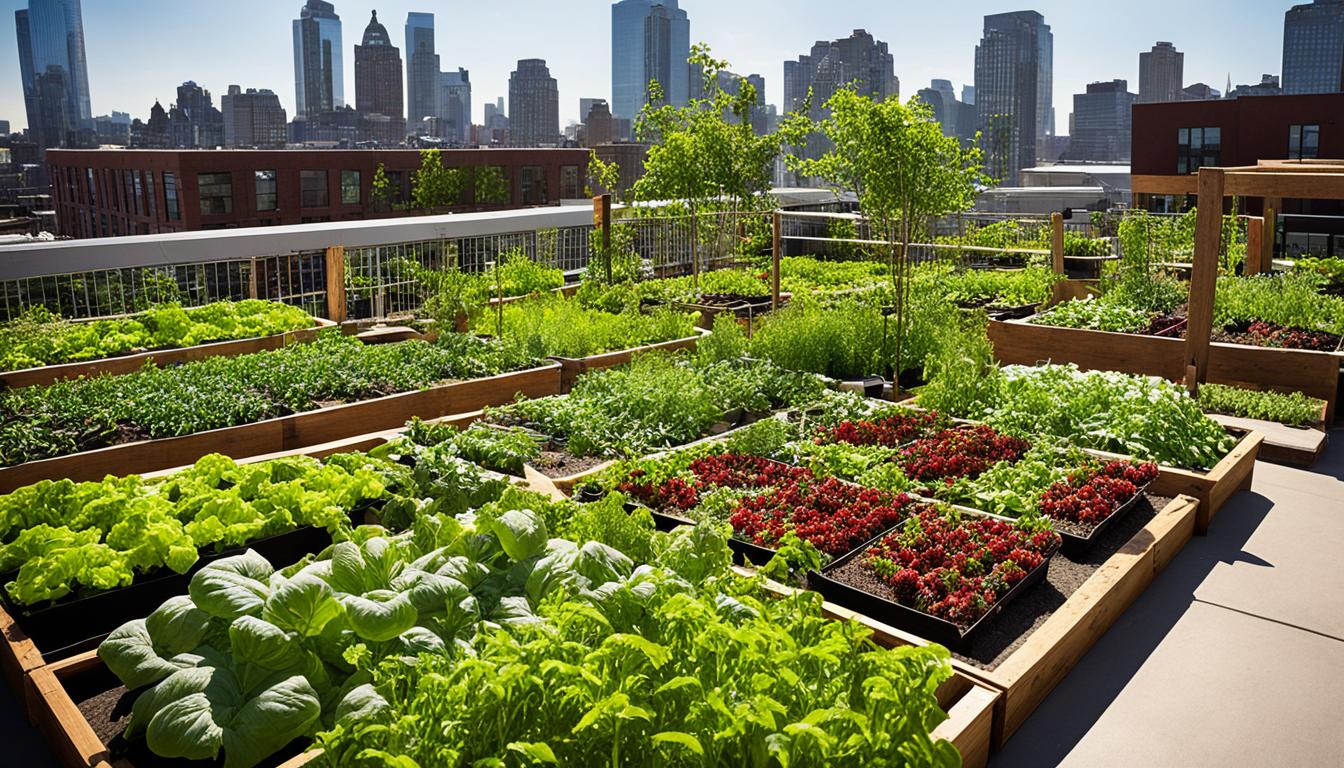
Urban Farming in Major U.S. Cities
Urban farming is on the rise in major cities across the United States, offering a sustainable solution to food production and bringing fresh produce closer to urban dwellers. Let’s explore some of the exciting urban farm initiatives in key cities.
New York City: Farm.One
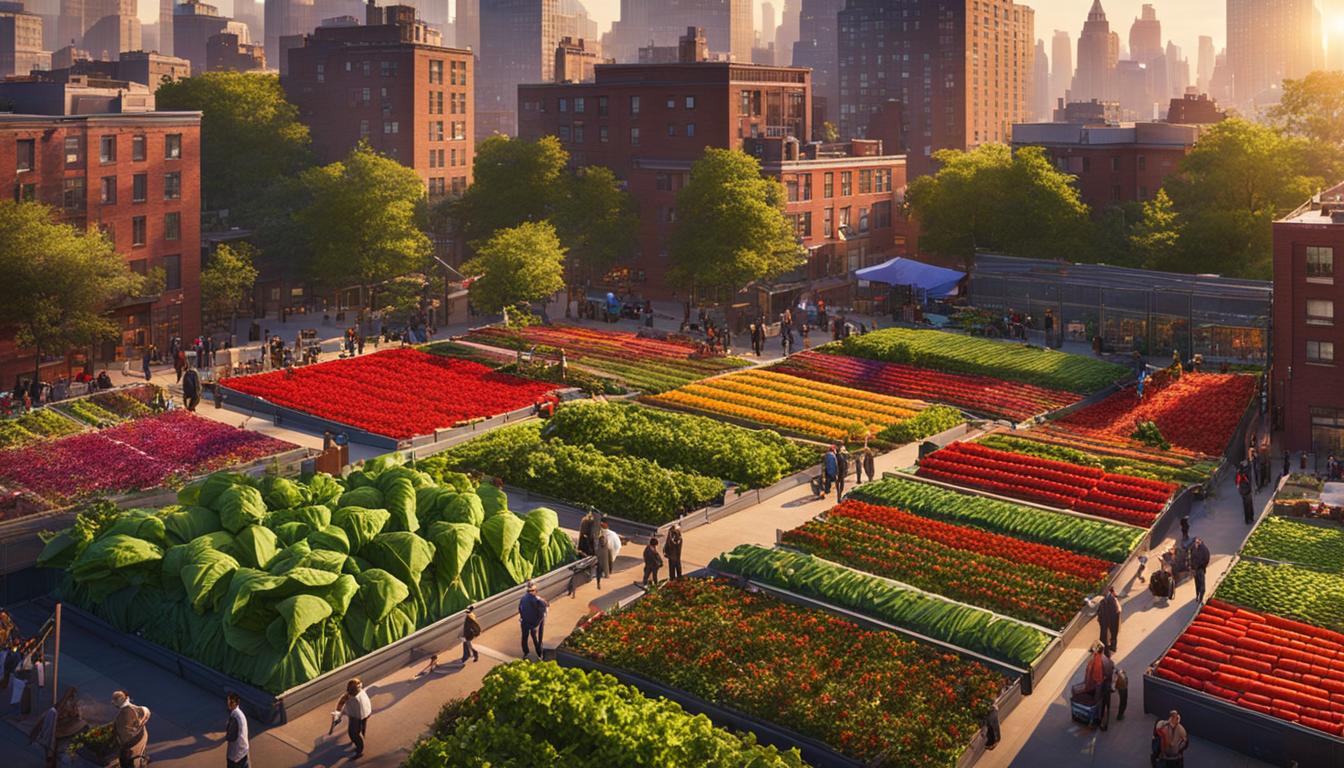
In the bustling streets of New York City, Farm.One stands out as an innovative indoor hydroponic farm. Farm.One utilizes advanced farming techniques to grow specialty crops year-round without soil. This urban farm offers guided tasting tours, allowing visitors to experience the unique flavors of their hyper-local produce.
Des Moines: Dogpatch Urban Gardens
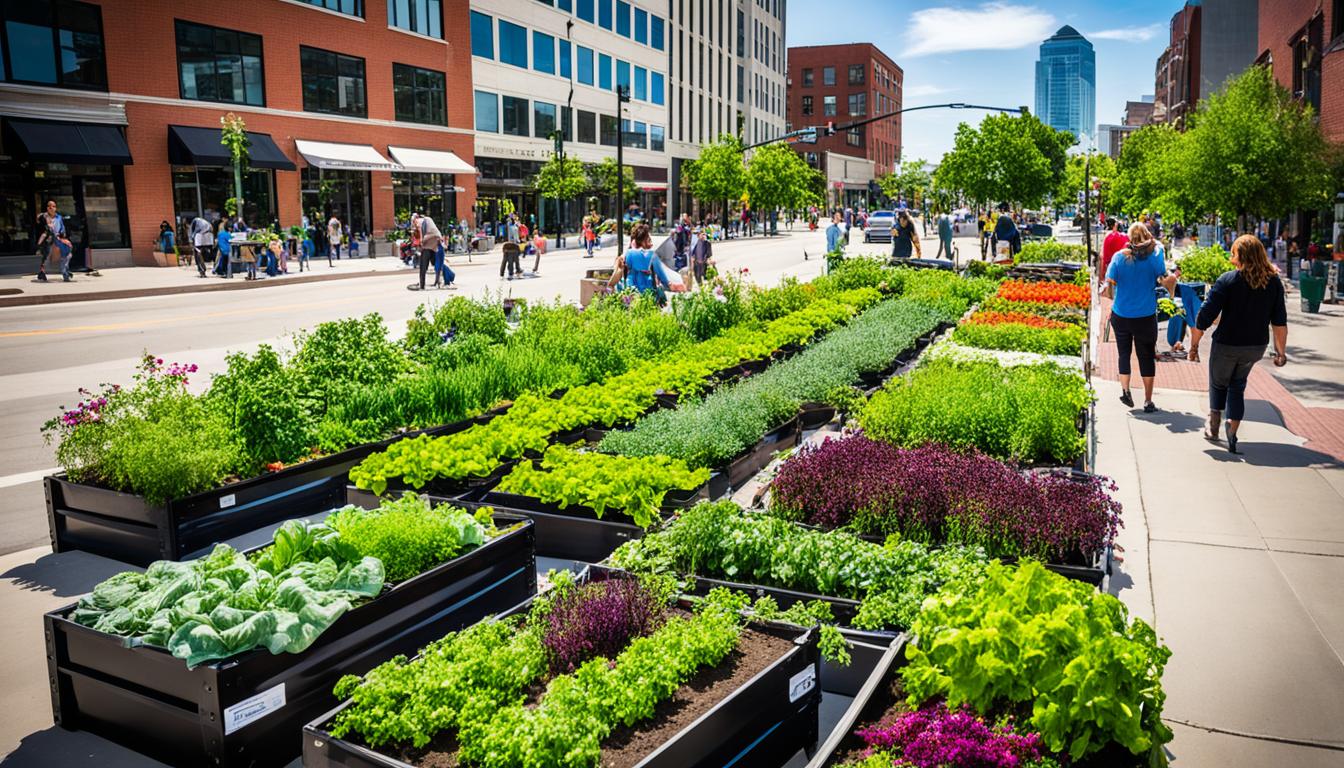
In Des Moines, Dogpatch Urban Gardens is an exceptional residential urban farm. Their commitment to sustainable farming practices has led them to cultivate organic vegetables right in the heart of the city. With farm-to-fork dinners and immersive experiences, Dogpatch Urban Gardens invites you to reconnect with nature and enjoy the bounty of their harvest.
Cleveland: Ohio City Farm
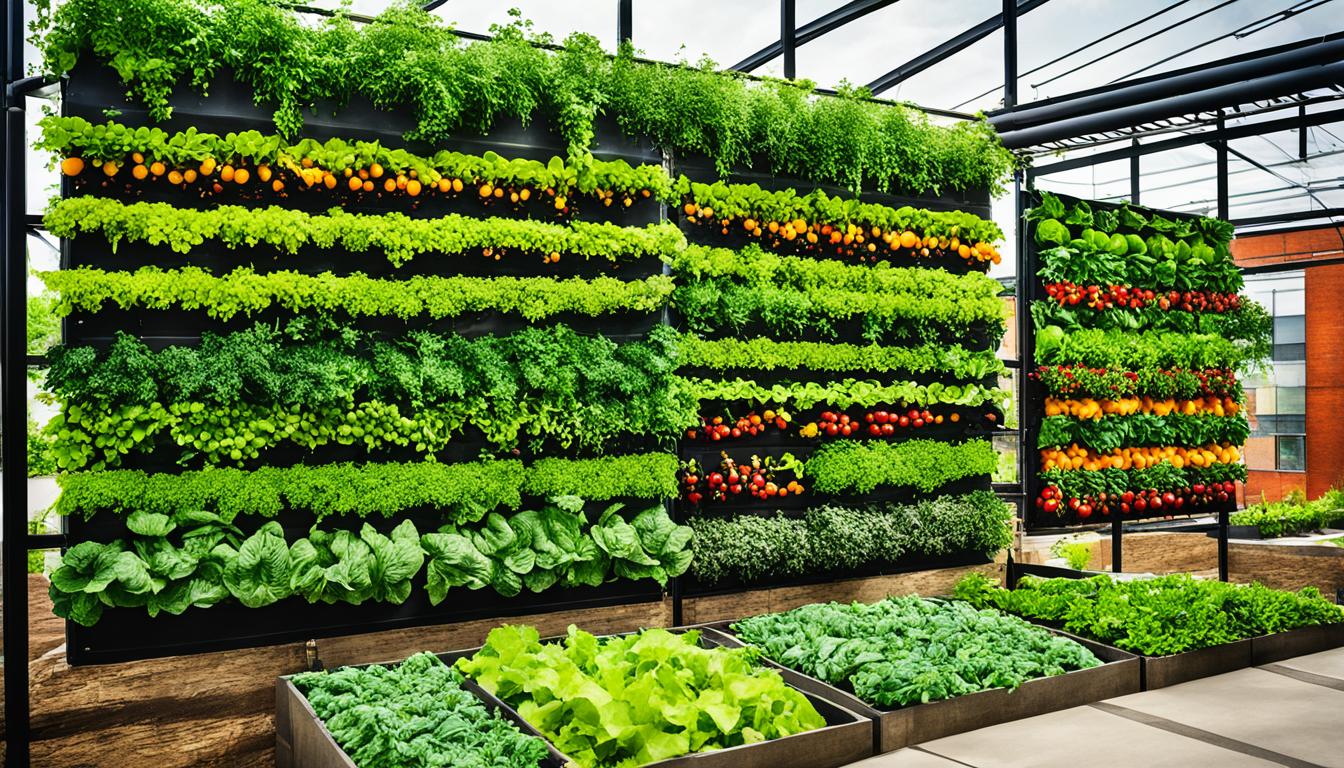
Ohio City Farm in Cleveland is renowned for its philanthropic initiatives and large-scale urban farming. As one of the largest contiguous urban farms in the United States, Ohio City Farm focuses on growing fresh produce while also supporting underserved communities. Their dedication to sustainability and community engagement makes them a shining example of urban farming.
San Diego: W.D. Dickinson Farm

In San Diego, W.D. Dickinson Farm sets itself apart as a veteran-owned and operated urban farm. They specialize in growing heirloom fruits and vegetables using organic methods. With a strong focus on sustainability and quality, W.D. Dickinson Farm brings the flavors of the past to the present, allowing you to enjoy the remarkable taste of heirloom produce.
Mesa: True Garden

Mesa, Arizona, is home to True Garden, a high-tech vertical aeroponic farm. True Garden’s state-of-the-art facilities utilize renewable energy and sustainable practices to grow fresh vegetables year-round. With a focus on maximizing space and efficiency, True Garden demonstrates how urban farming can flourish even in the desert.
Conclusion
Urban farming is revolutionizing the way we produce food in cities, offering a sustainable solution to meet the growing demand for fresh and locally-grown produce. By utilizing innovative techniques such as hydroponics and vertical farming, urban farmers are able to overcome space limitations and bring agriculture to the heart of our urban environments.
Not only does urban farming provide a source of fresh, nutritious food, but it also fosters community engagement and creates job opportunities. Community gardens and urban farms become hubs for social interactions and connections, promoting a sense of belonging and well-being among city dwellers. Furthermore, by reclaiming unused spaces and greening our cities, urban farming helps reduce the environmental footprint and preserve biodiversity.
Successful examples of urban farming across the United States and Canada demonstrate the potential of this practice to transform our cities into self-sufficient and resilient food systems. From Lufa Farms in Montreal, using rooftop greenhouses to provide hyper-local produce year-round, to True Garden in Mesa, Arizona, utilizing vertical aeroponic farming in a desert environment, these pioneers showcase the possibilities of sustainable food production in urban settings.
As cities continue to embrace urban farming, they contribute to a greener and healthier future. By supporting urban agriculture initiatives, individuals can actively participate in the green revolution and enjoy the benefits of fresh, locally-grown produce right at their doorstep. Together, we can nourish our cities, enhance community connections, and create a more sustainable and resilient food system through urban farming.
FAQ
What is urban farming?
Urban farming, also known as urban agriculture, is the practice of growing fresh produce in urban areas. It can take various forms, such as rooftop gardening, community gardens, and professional urban farms.
What are the benefits of urban farming?
Urban farming offers benefits such as community engagement, job creation, and environmental preservation. It also promotes mental and physical well-being, provides a sense of community, and encourages healthy dietary choices.
What are the types of urban farming?
There are two main types of urban farming: community gardens and professional urban farms. Community gardens are small urban areas where individuals grow their own vegetables, while professional urban farms are agricultural businesses that operate within a city.
What innovative techniques are used in urban farming?
Urban farming often requires innovative techniques such as hydroponics (growing plants without soil), vertical farming (maximizing crop production in vertical spaces), and indoor farming (utilizing controlled environments like greenhouses or hydroponic systems).
Can you provide examples of successful urban farming projects?
There are several successful examples of urban farming across the United States and Canada, including Lufa Farms, GoodLeaf, Ohio City Farm, W.D. Dickinson Farm, and True Garden.
What are some urban farming initiatives in major U.S. cities?
Urban farming is gaining popularity in cities like New York City, where Farm.One operates an indoor hydroponic farm, and Des Moines, where Dogpatch Urban Gardens cultivates organic vegetables. Other cities like Cleveland, San Diego, and Mesa also have notable urban farming projects.
What is the significance of urban farming?
Urban farming brings fresh produce and sustainable food production to cities, contributing to community well-being, job opportunities, and a greener urban landscape. It promotes localized food production and reduces the environmental impact of long-distance food transportation.
Source Links
- https://canadiangeographic.ca/articles/fresh-from-the-city-the-rise-of-urban-farming/
- https://www.agritecture.com/blog/2021/8/27/these-urban-farms-are-delivering-fresh-produce-to-cities-in-the-us
- https://kids.frontiersin.org/articles/10.3389/frym.2023.1060155

